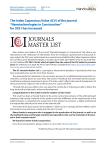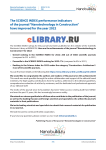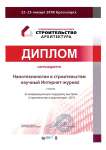Статьи журнала - Nanotechnologies in Construction: A Scientific Internet-Journal
Все статьи: 409
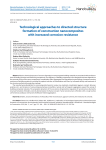
Статья научная
Physico-chemical processes of structure formation in nanocomposite building materials are associated with transformations of binding matrices and reinforcing components. The efficiency of building composites in the designed structures depends on the accurate choice of the source components: nanobinders, fillers (aggregates) and manufacturing technology. Increased corrosion resistance of building materials is provided by optimal selection of nanobinders and fillers, by increased density and treatment of the structure surface with protective coatings. The manufacturing feasibilities for nanocomposites based on various raw materials, nanobinders (gypsum, cement, bitumen, polymer, etc.), and inclusion of various dispersed phases (nanofillers, natural and technogenic aggregates) expand the variety of building composite materials. The synergistic dynamism of the occurrence of geometrical regularity of nanostructures during the structure formation of binders correctly demonstrates the fractal concept. Fractal nanostructures of binders with a rough surface are formed according to mechanism of diffusion-limited aggregation.
Бесплатно
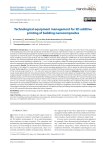
Technological equipment management for 3D additive printing of building nanocomposites
Статья научная
Introduction. The development of innovative approaches to digital equipment control that ensure the production of 3D building structures with high operational and technical-economic characteristics remains an urgent task. The handling and maintenance of technological equipment during the process of 3D-printing of construction objects do not always meet the modern requirements of technical systems management. Methods and materials. 3D-printing is based on the method of extrusion: molding of a building structure layer-by-layer with the addition and fairly rapid subsequent solidification of nanocomposite building materials. The resulting optimized nanocomposition must have the required rheology, which set the comb-like polycarboxylate esters with nanosteric repulsion at a distance of ≈ 11 nm. In order to organize a stable 3D-printing technology, it is also necessary to select the appropriate optimal fillers that provide the necessary physical, mechanical and operational characteristics to the hardened nanocomposite. Results. The effectiveness of three-dimensional printing calls for the coordinated operation of a construction-grade 3D-printer. In this regard, it is necessary to have concrete pumping equipment that is able to pump the initial nanocomposition through flexible pipelines at a certain speed. It is necessary to consider the influence of pressure and volume to increase the power of the concrete pump motor by 14–17%, and at the same tine reduce the level of vibrations. Discussion. Digital 3D-technologies reveal unique opportunities for innovative production of three-dimensional construction objects and engineering structures. Technological quality management of 3D-printing depends on the correct alignment of the printer mechanisms, and the reduction of defective products can be achieved by adjusting the molding parameters of building nanocomposites. The structure-forming curing of Portland cement nanocomposites is based on the formation of fractal structures of calcium hydrosilicate clusters with dimensions of 47–51 nm, that form nanoaggregates (125–132 nm), which gradually cement the fillers due to adhesive interactions. The high demand for the corresponding equipment only strengthens the advantages of 3D-additive technologies: its practical waste-free operation, low power consumption of 3D-printers, time reduction of design-to-completion process by 8–11 times. Conclusions. Technological managing of concrete pump equipment for 3D-additive printing of building nanocomposites reduces energy costs by 26–29%, and at the same time reduces the level of vibration.
Бесплатно
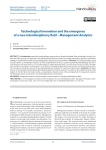
Technological innovation and the emergence of a new interdisciplinary field – Management Analytics
Статья научная
The Introduction argues that interdisciplinary research relies on shared knowledge. When knowledge is shared, a fundamental shift can occur over time, and a new interdisciplinary field can emerge. For example, nanoscience, quantum computation emerges as interdisciplinary fields that eventually grew to become their own disciplines. Main part. The article provides a review of extant papers on management analytics. The field of management analytics is a newly developing interdisciplinary field that is attracting more and more attention. In this study, overall, 201 papers were examined. The results show that that the field of management analytics is emerging. Two main aspects of the field are investigated: application-based research and theory-based research. This study aims at providing a status of the area called Management Analytics for academia and practitioners. Conclusion. This paper focuses on the emerging interdisciplinary field called Management Analytics, based on an analysis of 201 published articles on the subject. For the first time, this study provides a comprehensive literature review of the emerging field of management analytics. The developing trends, characteristics, and related applications are introduced.
Бесплатно
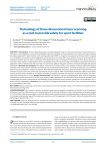
Technology of three-dimensional laser scanning as a tool to provide safety for sport facilities
Статья научная
Introduction. Human safety during sport activities depends mostly on the technical states of sport facilities. According to current legislation, every school and higher education institution with sport facilities must meet nationwide standards for safety requirements. Sports facilities with existing codes and GOSTR are inspected by a special committee, which is required for accreditation, and which has been applied for several decades. This study offers more accurate and up-to-date methods for inspection of these sport facilities, specifically three-dimensional laser scanning. The technology of three-dimensional laser scanning is used mainly to obtain high precision and detailed measurements of any object. The authors analyzed the methods of application of three-dimensional laser scanning to assure human safety during sport activities at schools and higher educational institutions. Materials and methods. The objects analyzed were running tracks at the stadium at Kuban State Technological University. The main research method is an empirical one, namely field measurements. Scanning of racetracks was performed with the Leica ScanStation C10 from six stations. After field measurements were taken, point cloud was imported into special software to process the results of the laser scanning by the Leica Cyclone. After measurements were taken, all the critical points of the racetracks were classified by the height. According to existing standards for racetracks at athletic stadiums, the allowable value of roughness is 10 mm. Results and discussion. Classification of points revealed that the limit value for roughness of University’s racetrack was 9 mm (which meets existing safety requirements for racetracks). Thus, racetracks of Kuban State Technological University underwent the accreditation process performed by the research group from the Department of Cadaster and Geo-Engineering. Conclusion. The conclusion of the paper detertmined that, in fact, laser scanning can be applied to control safety of race tracks.
Бесплатно
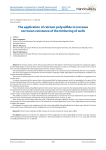
The application of calcium polysulfide to increase corrosion resistance of the timbering of wells
Статья научная
The cement slurries used in well casing should ensure the tightness of the lining and protect the casing from aggressive formation fluids. At the same time, cement and water based solutions are used for cementing, with a water-cement ratio of 0.45–0.9, which predetermines their high porosity and low corrosion resistance. The technologies for increasing the durability of concrete used in con-struction practice when fixing wells are not acceptable. One of the most aggressive components of reservoir fluids is hydrogen sulfide, depending on thermodynamic conditions, can be both dissolved and gaseous. The analysis of various types of corrosion of cement stone shows the ki-netics is determined by the diffusion of aggressive ions into the stone. To reduce the porosity of the cement stone, calcium polysulfide has been proposed, which can precipitate in the pores of the stone during hardening of the cement slurries, clogging the pores, reducing their size, slowing down the diffusion rate of aggressive ions into the cement stone. In addition, calcium polysulfide adsorbing in the pores on cement hardening products will ensure the inhibition of pore space. Three methods of calcium polysulfide injection into the cement slurries were tested: into the tempering fluid (water), directly into the prepared cement slurry and dry method, through cement powder, which was subsequently subjected to disintegrator treatment. The results of the experiments showed calcium polysulfide make an impact on the rheological properties and pumpability of cement slurries, increasing the strength of the obtained stone and reducing its permeability. The stability of a stone in an acidic environment was estimated by its corrosion by one molar hydrochloric acid. The depth of stone corrosion with increasing concentration of PSS decreased from 30 to 6 mm in 21 days. When testing the cement stone under the action of dissolved hydrogen sulfide for 45 days, it was shown that the increased concentration of calcium polysulfide from 0 to 5% reduced the corrosion depth from 5.0 to 0.3 mm, depending on the technology of adding the reagent. Micrographs of cement stone samples proved that calcium polysulfide, being distributed in the pore space, blocks the surface of the cement stone, limiting the contact of aggressive ions with hardening products.
Бесплатно
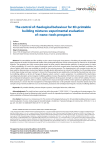
Статья научная
The extrudability and firm stability are the criteria rheological characteristics of building 3D printable mixtures. This paper presents the results of experimental studies of the rheological behaviour of fresh cement pastes as matrices for 3D printable mixtures. The squeezing test, with constant plate speed, has been used for determination plasticity of cement pastes as criteria of their extrudability. As a result, the typical rheological models of the fresh cement pastes have been identified. In addition, the value of plastic yield stress was evaluated as criteria for the extrusion process. The squeezing test, with constant strain rate, has been used for determination structural and plastic strength, plastic deformations as criteria for the ability of a 3D printable mixture to hold shape during multi-layer casting. It is shown that these properties are significantly controlled by the plasticizer and viscosity modifying additives as factors of changes of disperse system «cement + water» properties. It is established that electrolytes, nanodispersed adsorption-active inorganic modifying additives increase the plasticity of the fresh cement pastes. At the same time, the nanodispersed adsorption-active inorganic modifying additives develop plastic strength as criteria of firm stability. The introduction of inorganic polymers, inert to cement, improves the structural strength of fresh cement pastes but significantly reduces their plasticity. It is shown that the management of rheological behaviour of 3D printable mixtures should be based only by the complex using of chemical addi-tives such as electrolytes, plasticizers and nanodispersed inorganic viscosity modifying additives.
Бесплатно
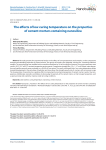
The effects of low curing temperature on the properties of cement mortars containing nanosilica
Статья научная
This study presents the experimental results on the effects of curing temperature and nanosilica, on the compressive strength and absorbing properties of cement mortars. Two groups of mortars were prepared, with the first containing reference samples. The second group was modified with a nanosilica admixture by 3% of the weight of cement. The mortar specimens were cured in 20оC, 10оC and 5оC constant temperature environments. Compressive strength after 12 h, 1, 2, 7 and 28 days, water absorption and capillary porosity were evaluated on a 40×40×40 mm prism. The results confirmed that a low curing temperature delays strength development in the early days of hydration and slows down the strength growth rate of mortars, with an increase in age. The incorporation of nanosilica has a positive effect in improving the mechanical properties of cement mortars cured at low temperatures. Additionally, nanosilica contributes to decreasing the porosity of the cement matrix, so that transport properties, such as open porosity and sorptivity, improve under all curing conditions.
Бесплатно
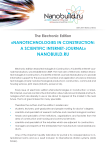
The electronic edition «NANOTECHNOLOGIES IN CONSTRUCTION: A Scientific Internet-Journal»
Другой
Бесплатно

The electronic edition «Nanotechnologies in construction: A Scientific Internet-Journal»
Другой
Бесплатно

The electronic edition «Nanotechnologies in construction: A Scientific Internet-Journal»
Другой
Бесплатно

The electronic edition «Nanotechnologies in construction: A Scientific Internet-Journal»
Другой
Бесплатно

The electronic edition «Nanotechnologies in construction: A Scientific Internet-Journal»
Другой
Бесплатно

The electronic edition «Nanotechnologies in construction: A Scientific Internet-Journal»
Другой
Бесплатно
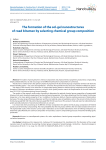
The formation of the sol-gel nanostructures of road bitumen by selecting chemical group composition
Статья научная
The studies of paving bitumen chemical composition and physicochemical properties produced by compounding deeply oxidized bitumen, tar and vacuum gas-oil of different hydrocarbon composition are carried out. The bitumen is marked to have the optimal complex of properties if the best chemical group composition of three main elements bitumen binding agents – oils, resins and asphaltenes - is formed. That provides the best structure of bitumen oildisperse system. The object of the research is the selection of compounded paving bitumen chemical group composition that provides the formation of bitumen nanodisperse system as «sol-gel» which quality metrics match the requirements of the new State Standard 33133-2014 «Petroleum paving viscous bitumen». The analysis of the research results makes it possible to determine the optimal chemical group composition of compounded bitumen that meets standard requirements by physicochemical properties. It has been determined that the higher the bitumen dispersion is, the more plastic properties it has. In addition, the bitumen ability to thermal-oxidative processes of deterioration decreases. The value range of bitumen dispersion and the most optimal values of asphaltenes ratio to the amount of oils and resins for bitumen grade BND 100/130 and for bitumen grade BND 70/100 were found. This amount of oils and resins for referred bitumen grades provide production of nanostructured bitumen as «sol-gel». It is shown that when processing tar of different chemical composition the optimal chemical group composition of finished product can be formed by compounding. That rises probability that the end product will fit to the new State Standard 33133-2014. The represented results of the research can be used in fabrication as the modern laboratories of the oil-refining enterprises can determine quite efficiently the chemical composition of oil products used in compounding processes in bitumen binding agents production.
Бесплатно
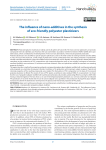
The influence of nano-additives in the synthesis of eco-friendly polyester plasticizers
Статья научная
Plasticized polymer materials are widely used in all spheres of human life. The most common plasticizers are aromatic compounds-esters of o-phthalic acid. However, their use was limited in accordance with the EU Directive REACH (2009) due to possible toxicity, which contributed to the development of new non-toxic alternatives, which include polyester plasticizers. Polyester plasticizers are classified as special purpose plasticizers. Due to the wide variety of starting materials and the ability to vary the size of the molecule, a wide range of plasticizers can be synthesized. These are mainly polyesters of polyatomic alcohols esterified with dibasic acids and modified with monocarboxylic acid or aliphatic alcohol. Polyesters-based plasticizers contribute to the production of PVC compositions with improved properties such as low volatility, resistance to extraction, excellent flexibility, wear resistance, UV resistance and heat resistance. Also, such plasticizers exhibit an excellent non-sweating property of plastics. This paper describes a method for preparing a polyester compound propylene glycol adipate modified with cyclohexanecarboxylic acid, proposed as a plasticizer of polyvinyl chloride. Conditions of its production with maximum output are given. Physical and chemical properties of the resulting compound were studied. The formulation of PVC-composition on the basis of the received polyester plasticizer is offered. The results of tests of PVC plastic according to state standard 5960-72 are presented. It is shown that the use of propylene adipate modified with cyclohexanecarboxylic acid provides a plasticizing efficiency as high as DOP, while having a reduced migration. This fact allows us to use the developed polyester plasticizer as a non-toxic alternative to industrial PVC plasticizers. It has been found that the use of calcium adipate nano quantities in the production of propylene glycol adipate increases the yield of the desired ester and improves the physical and mechanical properties of PVC plastic.
Бесплатно

